“I am a woman who wants to reach out and take 40 million people in my arms.”
That was why Judy Garland loved to perform, to connect, comfort and console her fans. And she did just that during her legendary 1961 show at Carnegie Hall, which was dubbed “the greatest night in show business history” and made the legend the first woman to ever win Album of the Year at the Grammys.
But that was one bright spot in a life filled with was filled with controlling parents and studio executives, substance abuse issues, mental health struggles and tumultuous romances after The Wizard of Oz came out in 1939, making Garland one of the biggest stars in Hollywood at the age of 17. As her career skyrocketed, thanks to her vocal prowess and turns in hits like Meet Me in St. Louis and A Star is Born, Garland battled insomnia, depression, and alleged domestic abuse, all of which she tried to hide from her adoring fans with a smile.
Now, in Judy, Renée Zellweger is earning rave reviews and Oscar buzz for her performance of the late icon, who died 50 years ago at just 47 years old. For Zellweger, no stranger herself to tabloid attention, it was important to show the woman behind the legend, to reveal how Frances Ethel Gumm, the toddler whose career started at two and a half years old, became Judy Garland.
“It’s hard to fully appreciate the context of the circumstances that she was grappling with at the time,” the Oscar winner told USA Today of playing the icon during her last major concert run before her death in 1969. “And when you see what she was able to achieve in spite of the challenges she faced, then you can really see how extraordinary she was. It sort of sets her apart, in my opinion.”
While the film really only focuses on the five-week run of shows at London’s Talk of the Town theater in 1968, offering flashbacks of the star’s past, Garland’s life was filled with challenges, secret traumas and travesties, public pain and scandal and complicated relationships with the five men who would become her husbands and her three children, including Liza Minnelli…
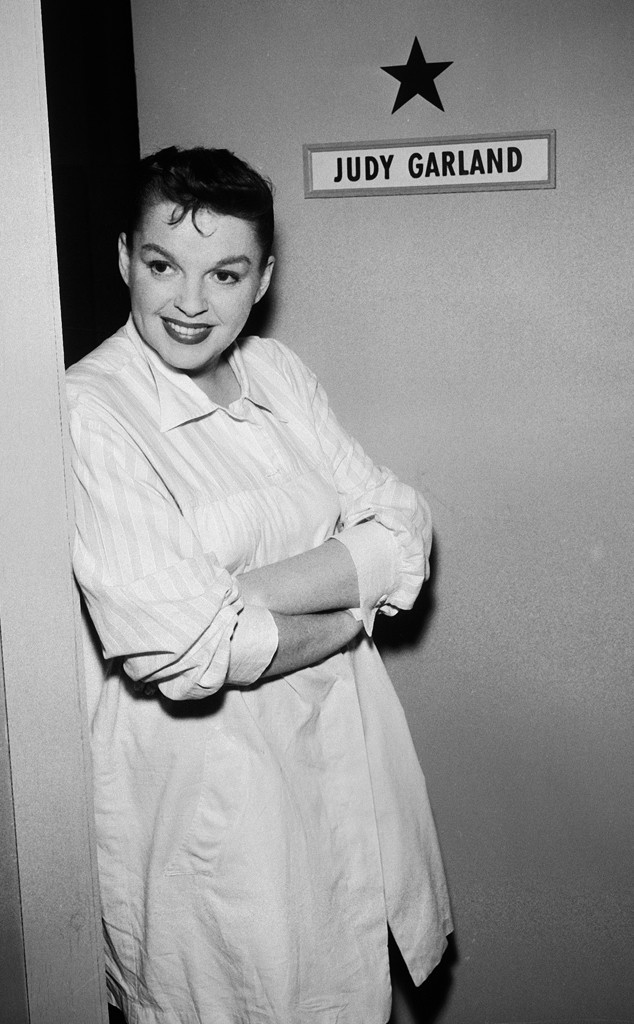
CBS Photo Archive/Getty Images
Controlling Stage Mother
Garland’s show biz career began when she was just two years old, with her mother Ethel Gumm putting all three of her daughters together for a traveling vaudevillian act known as the Garland Sisters before realizing Judy, the youngest, was the clear standout.
According to Garland biographer Gerald Clarke, Gumm became giving Garland sleeping pills and pep pills when she was just 10 years old, describing her as “tirelessly energetic, unconquerable in spirit,” per the Independent.
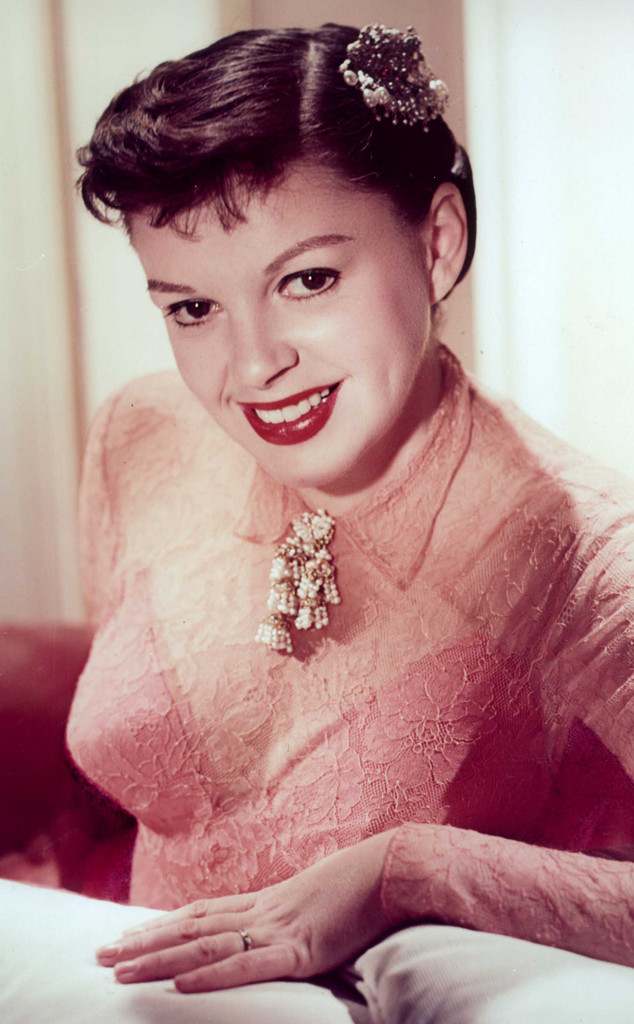
Moviestore Collection/Shutterstock
The star was once reported to have referred to Gumm as “the real Wicked Witch of the West,” an spoke frankly of her mother in a sit down with Barbara Walters in 1967.
“She was very jealous because she had absolutely no talent,” she said. “She would stand in the wings…and if I didn’t feel good…she’d say, ‘You get out and sing or I’ll wrap you around the bedpost and break you off short!’ So I’d go out and sing.”
Sexual Harassment
In his book Get Happy: The Life of Judy Garland, Clarke revealed Garland endured unwanted advances and sexual harassment at the movie studios beginning when she was just a teenager.
“Don’t think they all didn’t try,” Garland said, with one example including a studio head touching her breast while complimenting her voice, claiming he was touching her heart.
“I often thought I was lucky that I didn’t sing with another part of my anatomy,” said Garland in her unfinished memoir, per Clarke, noting she would endure harassment from the executive for four years.
Another executive allegedly told her he would “break you if it’s the last thing I do” when she rejected his advances.
Her Five Marriages
Garland first became a bride when she was just 19, marrying music composer David Rose, then 31, against her mother and film executive’s wishes. They eloped in Las Vegas before divorcing three years later.
During this time, Gumm reportedly forced her daughter to get an abortion when she was 20, working with the studio to keep it secret to protect her youthful image. (Per Vanity Fair, she was also forced to have an abortion by the studio in 1943 after an affair with Tyrone Power.)
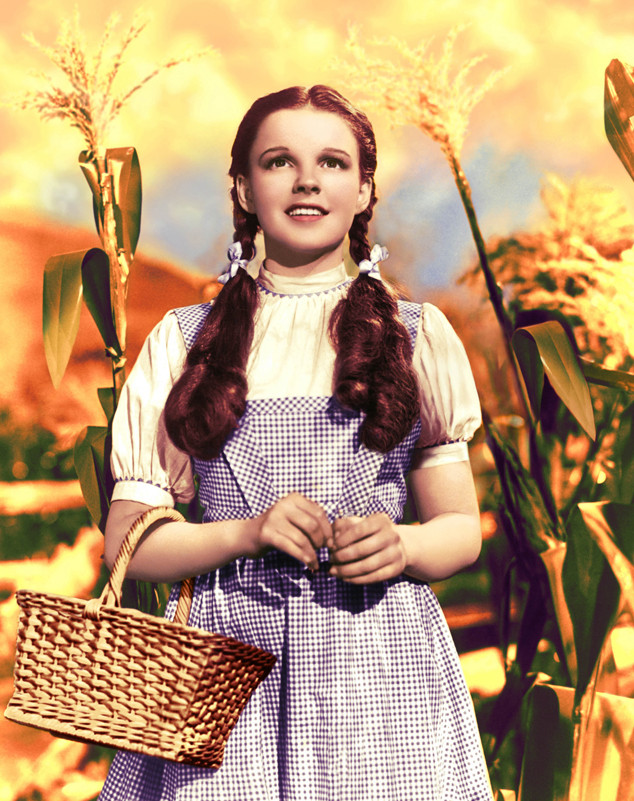
Silver Screen Collection/Hulton Archive/Getty Images
One year after her divorce from Rose, her Meet Me in St. Louis director Vincent Minnelli became her second husband, going on to have a daughter together, Liza. Their marriage ended in 1951 after six years, with the professional relationship proving just as complicated as their personal one.
During production on The Pirate, his wife missed 99 days of filming during the shoot due to her anxiety and substance abuse issues.
According to Minnelli’s biographer Emmanuel Levy, the Oscar-winning director was gay, though he married three other women, though he was private and didn’t mention his sexuality in his 1974 memoir.
Husband No. 3 was Sid Luft, a businessman she had two children with—Joey and Lorna—during their 13-year union and he helped revitalize her career at the time, producing A Star Is Born. But after their divorce in 1965, Garland alleged Luft was physically abusive, telling a judge during their court hearing, “He struck me many times…he did a lot of drinking.” He denied the allegations.
In his posthumous memoir Judy and I: My Life with Judy Garland, Luft revealed he made Garland get an abortion when she got pregnant before they were married in 1951.
“I was as unjustified as I was insensitive…I found myself saying, ‘Of course I want your baby, but we’ve got a show to do,'” Luft wrote. “Because of my negative reaction, Judy didn’t confide in me where and when she was going to have the abortion. I wasn’t attentive. I didn’t send flowers.”
Her marriage to actor Mark Herron was equally as tumultuous after their Las Vegas wedding in November 165. Less than two years later, Garland testified that Herron had hit her during their marriage, with Herron claiming he “only hit her in self-defense.” Like Minnelli, it would later be revealed that Herron was a closeted gay man.
Garland married her fifth and final husband, nightclub manager Mickey Deans, in March 1969, just three months before her death. Portrayed by Finn Wittrock in the film, Garland met Deans, 12 years her junior, when he was delivering stimulants to her hotel room in 1966. (He would be the one to find her dead in 1969 after an accidental overdose.)
While Garland was in love with Deans, those close to her were wary, with her production assistance Lori Wilder once saying he was “dreadful man who became her husband…if she put an advert in a newspaper for the most unsuitable person to take care of her, she wouldn’t have had a better response.”

Silver Screen Collection/Getty Images
Her History of Mental Illness and Substance Abuse
After her death caused by an accidental barbiturate overdose on June 22, 1969 at just 47 years-old, her obituary in the Los Angeles Times noted the legendary star suffered from “hepatitis, exhaustion, kidney ailments, nervous breakdowns, near-fatal drug reactions, overweight, underweight and injuries suffered in falls.”
After first taking pills at the age of 10, her dependence on amphetamines continued as her studio MGM after she was signed at 13, continued to give her pep pills to keep her energetic during her long shoots, and would take stimulants throughout her career as a means to keep her weight down, with her third husband Luft revealing in his memoir that “Judy had been determined to look like a ‘movie star’—she wanted to be camera slim,” during A Star Is Born, with his wife telling him, “I can’t be fat.” (Garland was reportedly once called an “ugly duckling” by an executive, helping to trigger a life-long battle with her self-esteem.)
In 1947, Garland was placed in a mental health facility after suffering a nervous breakdown on the disastrous shoot of The Pirate. After she was revealed, Garland would attempt to commit suicide in July of that year, attempting to cut her wrist with broken glass, according to Clarke.
Following another stay at a treatment facility, Garland attempted to return to work but was fired and replaced in two major movies due to her tardiness, clashes with directors and alleged alcohol abuse: Annie Get Your Gun (with Betty Hutton taking over the titular role) and The Barkleys of Broadway, with Ginger Rogers replacing her. In order to treat her depression before being fired from Annie, Garland underwent electroshock therapy, according to CBS.
According to her daughter Lorna, things would get better for a short period of time after her stays in facilities, but, “they would literally just dry her out…but they never dealt with the mental issues of why this was all happening,” she told Closer.
She continued, “I remember my father calling it a ‘mystery illness,'” while her brother Joey told Closer, “My mother was a great person, but there were times when she wasn’t acting right.”
After another hospital stay, Garland once again tried to return to work a MGM, with Summer Stock serving as her last project with the studio before they fired her from Royal Wedding in 1950, releasing her from her contract.
After 15 years with MGM as her home, Garland was distraught, reportedly cutting her neck with glass.
“All I could see ahead was more confusion,” Garland later said of this suicide attempt in Photoplay magazine. “I wanted to black out the future as well as the past. I wanted to hurt myself and everyone who had hurt me.”
Of course, Garland would make her big comeback in 1954’s remake of A Star Is Born, earning her rave reviews, but her private struggles continued, especially after Grace Kelly beat her for the Oscar in a stunning upset.
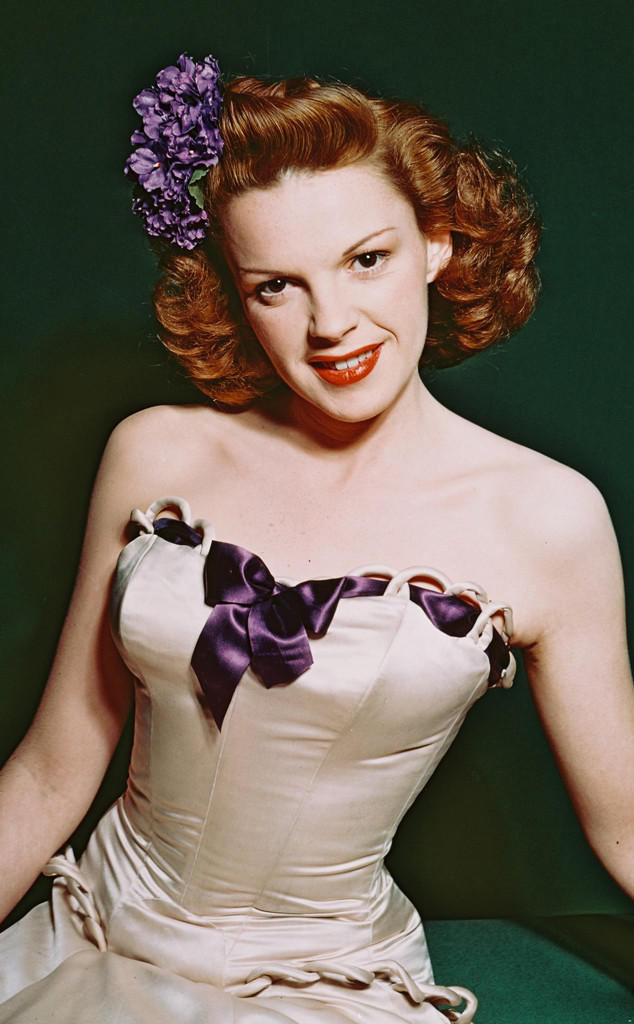
Silver Screen Collection/Hulton Archive/Getty Images
Luft, who helped his wife stage her comeback, revealed Garland also tried to commit suicide multiple times throughout their marriage, detailing her struggle with depression.
“Judy had cut her throat with a razor blade…what demons inhabited her soul just when life seemed so rich and productive?” he wrote in his memoir. “It was a gigantic puzzlement that she would poison herself with pills, and that the toxic reaction to whatever she swallowed would create an impulse for self-mutilation.”
She tried once more to kill herself years later while the couple was in Washington, D.C.
In his memoir, Luft revealed he was aware of her drug use but didn’t consider it an addiction at the time, also noting she was put on medication for post-partum depression, writing, “I wasn’t thinking of Judy as a clinically ill person, or ‘this is an addict.’ I was worried something awful had happened to the delightful, brilliant woman I loved.”
In November 1959, Garland was hospitalized after an acute hepatitis diagnosis, remaining in the hospital for almost three months. When she was released in January 1960, her doctors had reportedly informed her she likely had less than five years to live.
Despite this, Garland remained optimistic.
“Why do people insist on seeing an aura of tragedy around me always?” she said in a 1960 interview with Herbert Kretzmer (referenced in Judy Garland on Judy Garland: Interviews and Encounters. “My life isn’t tragic at all. I laugh a lot these days. At myself, too. Lord, if I couldn’t laugh at myself I don’t think I’d be alive.”
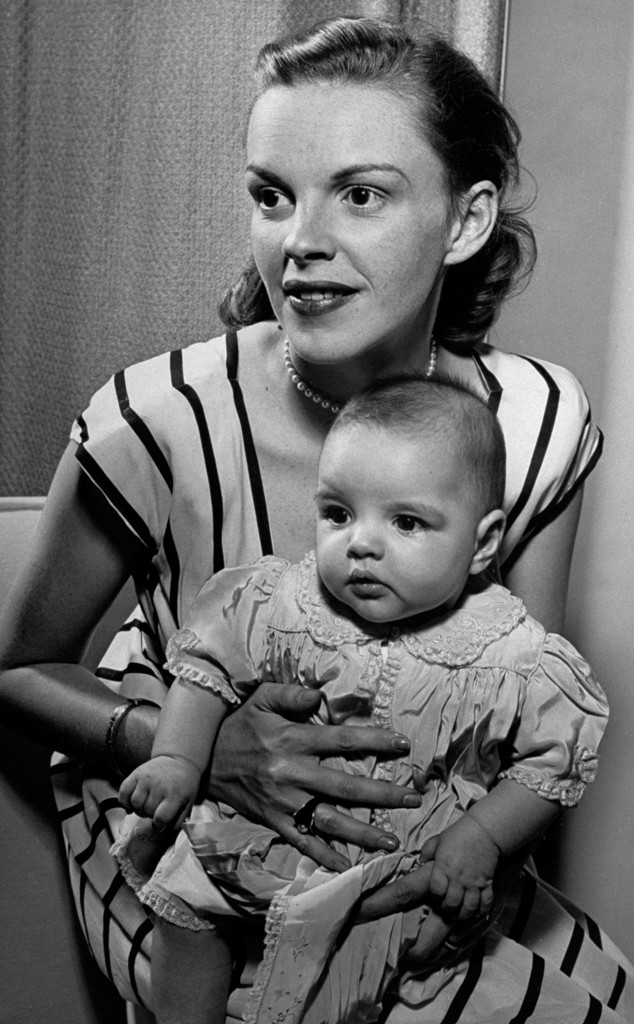
Martha Holmes/The LIFE Picture Collection via Getty Images
After failing to pay taxes for a period in the ’50s, Garland was in serious financial trouble in the early ’60s, leading her to sign one of “the biggest” talent deals in TV history at the time for The Judy Garland Show for CBS, netting a reported $24 million. It ran for one season, airing just 26 episodes before it was canceled, ultimately leading her back to the stage. (During this time, she also received an advance for a memoir she would ultimately never complete before her death, which was to be called The Judy Garland Story.)
But her concert performances were inconsistent due to her failing health; In 1964, she was over an hour late to a performance in Australia, leading them to boo and heckle her so severely she eventually left the stage early. She would later call the treatment “brutish.”
It’s also worth noting Garland suffered from severe insomnia, a condition often overlooked when the star’s life is examined. “Those little bits of context that seemed to be discounted as unimportant, I think they were invaluable to me,” Zellweger told Vulture.
She attempted another silver screen come back in 1966, landing a lead role in Valley of the Dolls, but she fired after receiving poor treatment from the director Mark Robson, according to her co-star Patty Dukes. Calling him the “meanest son of a b–ch I’ve ever met in my life,” Dukes said he played mind games with the fragile star.
By then, Garland’s spirit had been broken, telling McCall’s magazine, “Do you know how difficult it is to be Judy Garland? And for me to live with me? I’ve had to do it—and what more unkind life can you think of than the one I’ve lived?”
Her Complicated and Competitive Relationship With Liza Minnelli
Garland’s eldest daughter has gone on to have her own celebrated-yet-tumultuous relationship with fame after following in her mother’s performance footsteps after she made her film debut at the age of 3.
While she would go onto become an elite member of the EGOT club (winning an Emmy, Grammy, Oscar and Tony), Clarke wrote in his book that Minnelli dealt with many of the same self-esteem issues as Garland.
“Not only did they have the same unusual physique-a big chest, a short waist and long legs—but they shared the same likes and dislikes, even the same neuroses,” he wrote. “Liza, too, was convinced she was ugly, a belief that was to make her, like her mother, eternally insecure.”
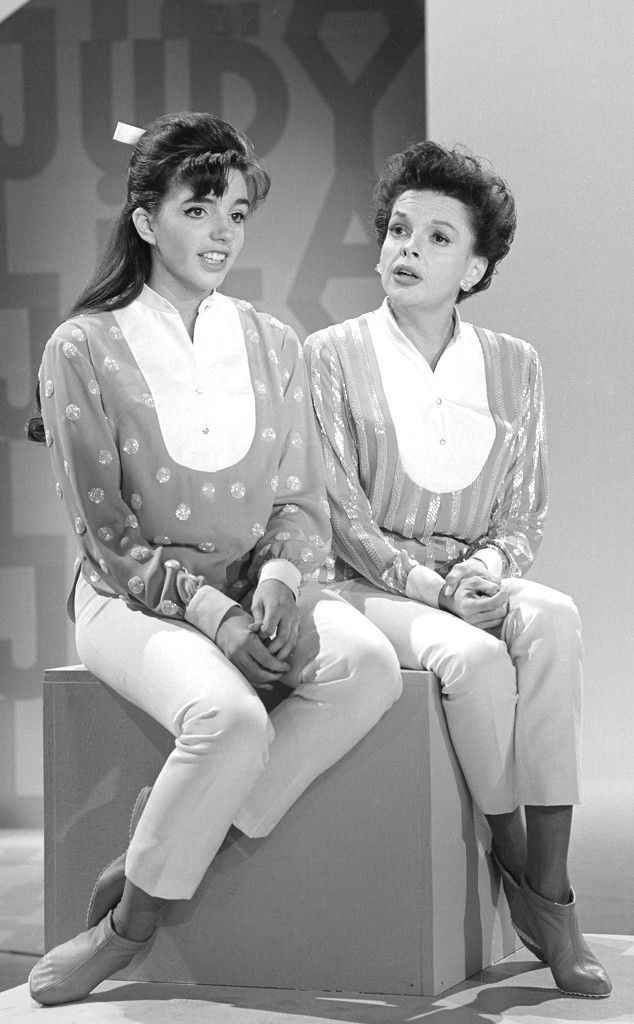
Getty Images
And that lead to a competitiveness entering their mother-daughter dynamic.
“It was like Mama suddenly realized I was good, that she didn’t have to apologize for me,” Minnelli, who would later become caregiver, along with her half-sister, to her mother, explained to The New York Times of performing with her mother at the age of 18. “It was the strangest feeling. One minute I was on stage with my mother, the next moment I was on stage with Judy Garland. One minute she smiled at me, and the next minute she was like the lioness that owned the stage and suddenly found somebody invading her territory. The killer instinct of a performer had come out in her.”
Like her mother, Minnelli has had multiple marriages, health issues, and has undergone several stays at rehabilitation facilities since the ’80s, checking into a treatment center in 2015 for substance abuse issues, her rep confirmed to E! News at the time.
Minnelli has been vocal about her “demons” in the past. She revealed back in 2008, “My whole life, this disease has been rampant. I inherited it, and it’s been horrendous, but I have always asked for help.”
But Garland didn’t like being referred to as a “tragic” figure, according to her daughter Lorna, who wrote a memoir, Me and My Shadows: A Family Memoir, about her childhood with the legendary star.
“We all have tragedies in our lives, but that does not make us tragic. She was funny and she was warm and she was wonderfully gifted. She had great highs and great moments in her career,” she told The Guardian. “She also had great moments in her personal life. Yes, we lost her at 47 years old. That was tragic. But she was not a tragic figure.”
Judy is in theaters now.
Don’t miss E! News every weeknight at 7, only on E!
